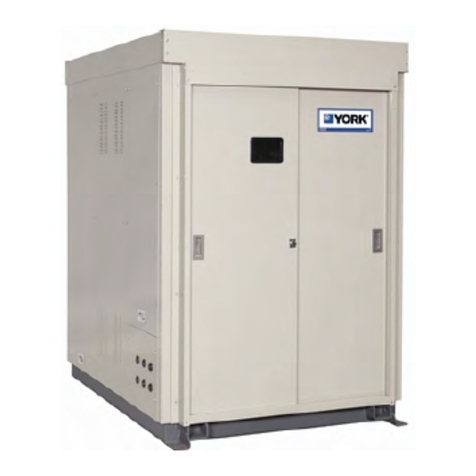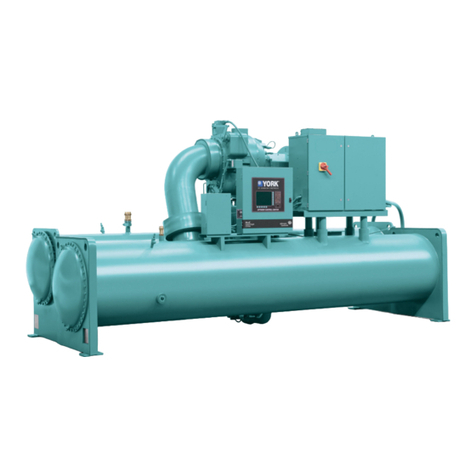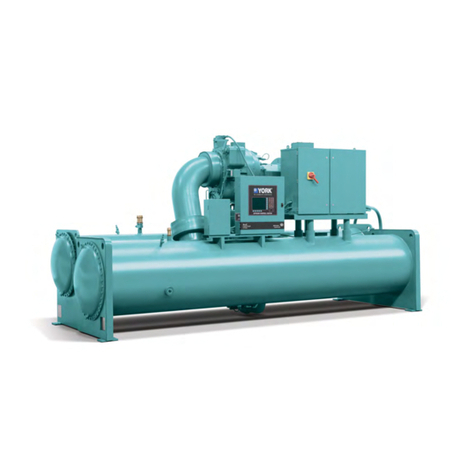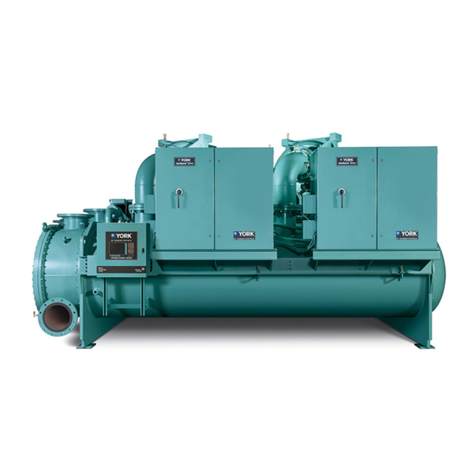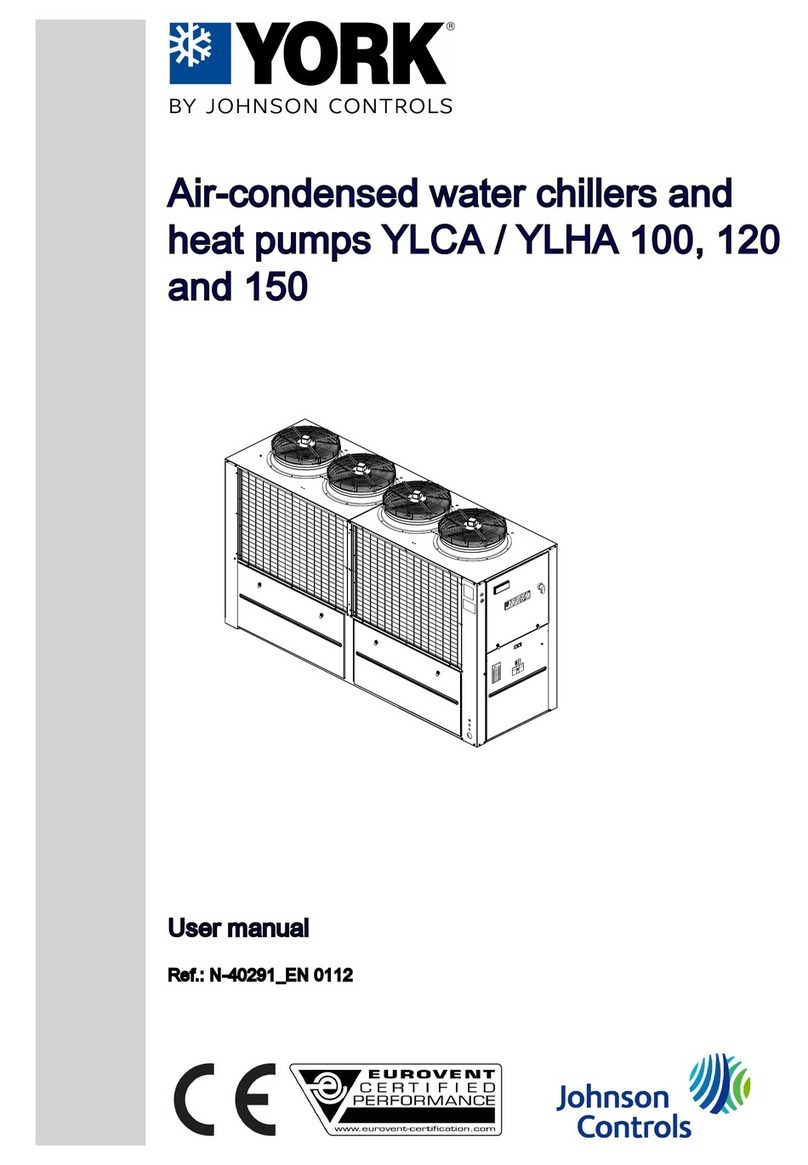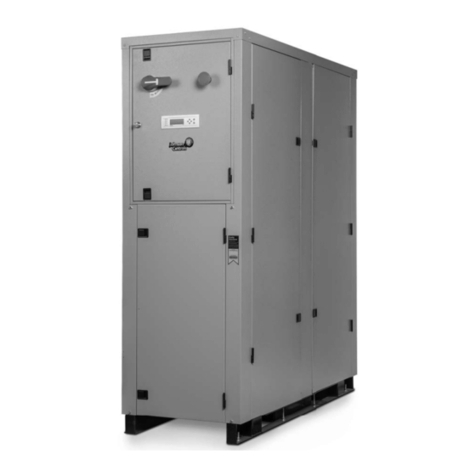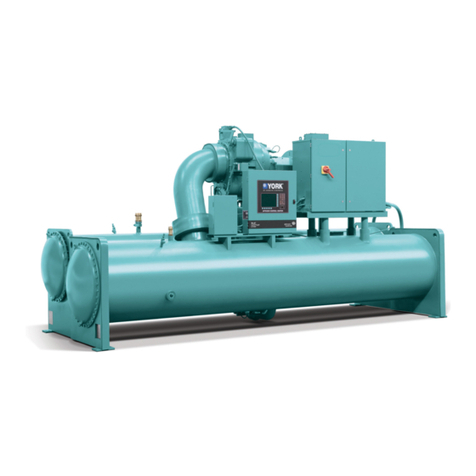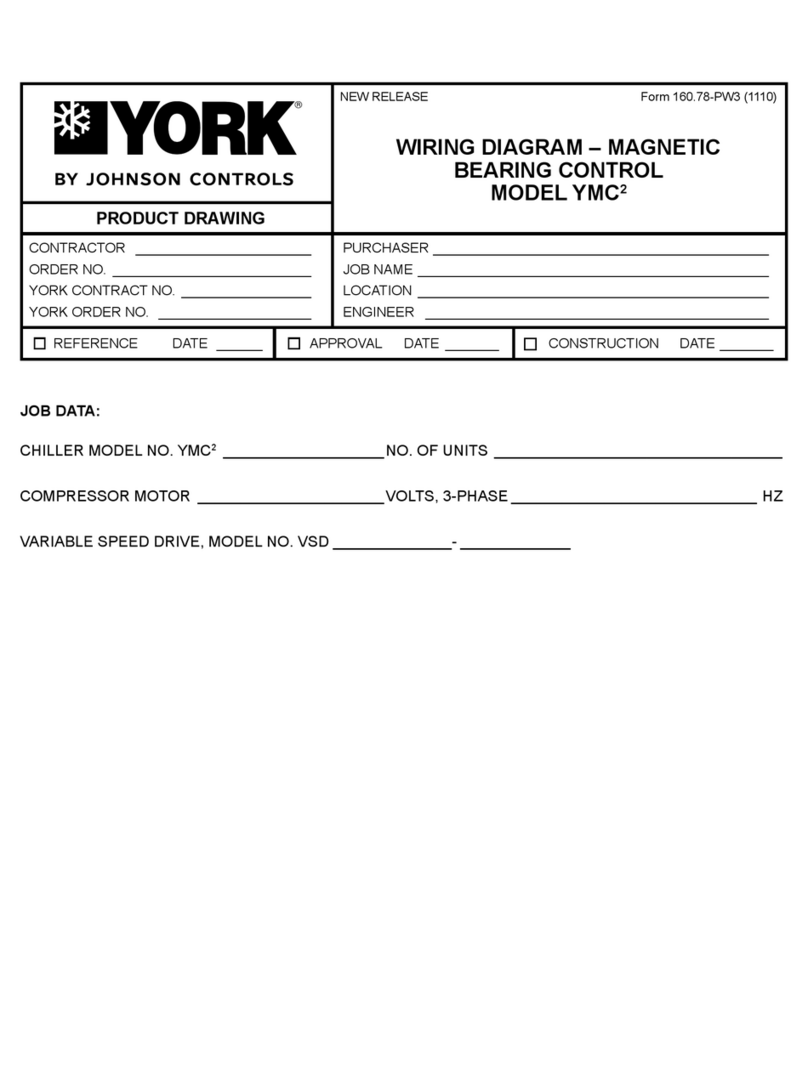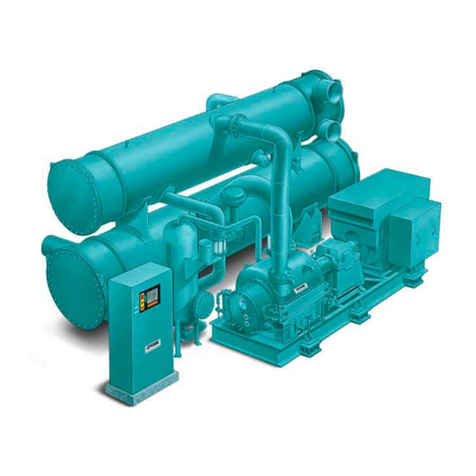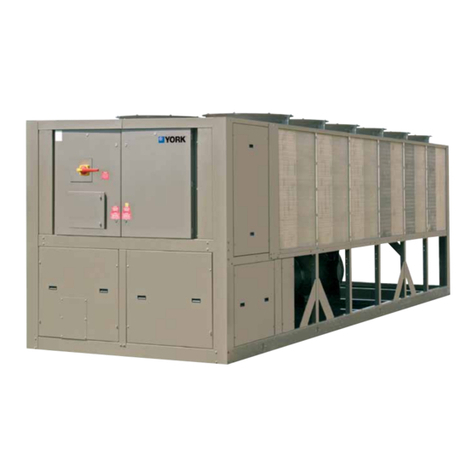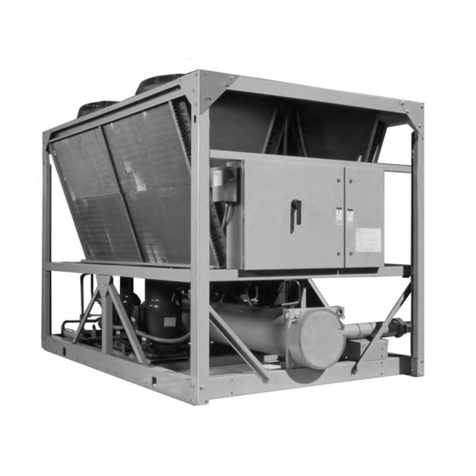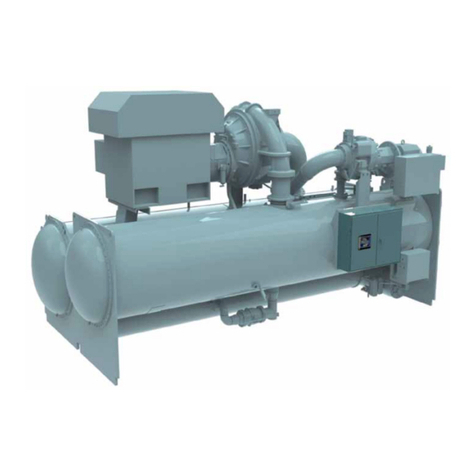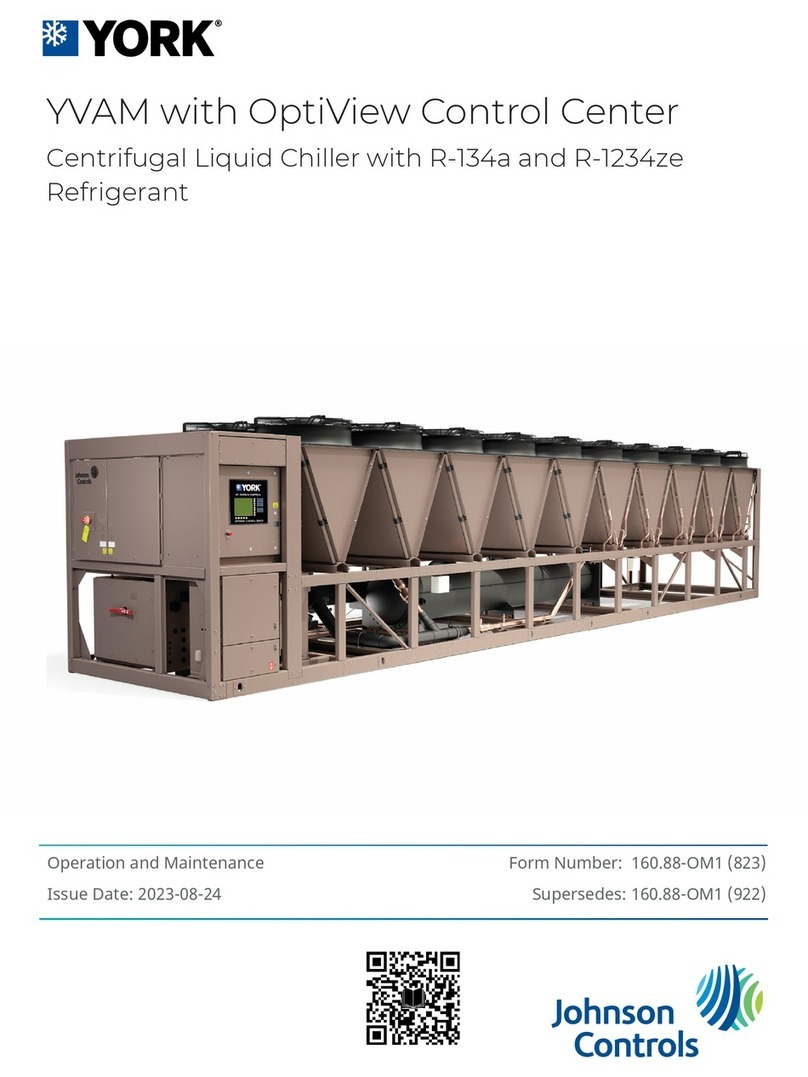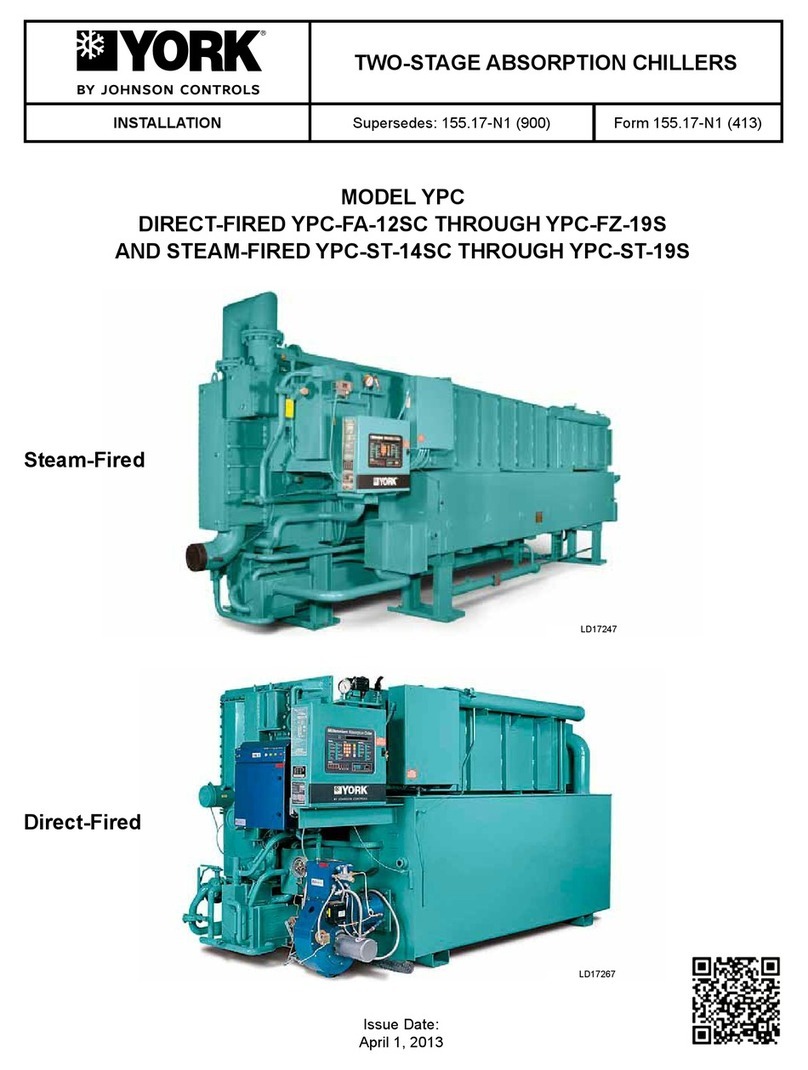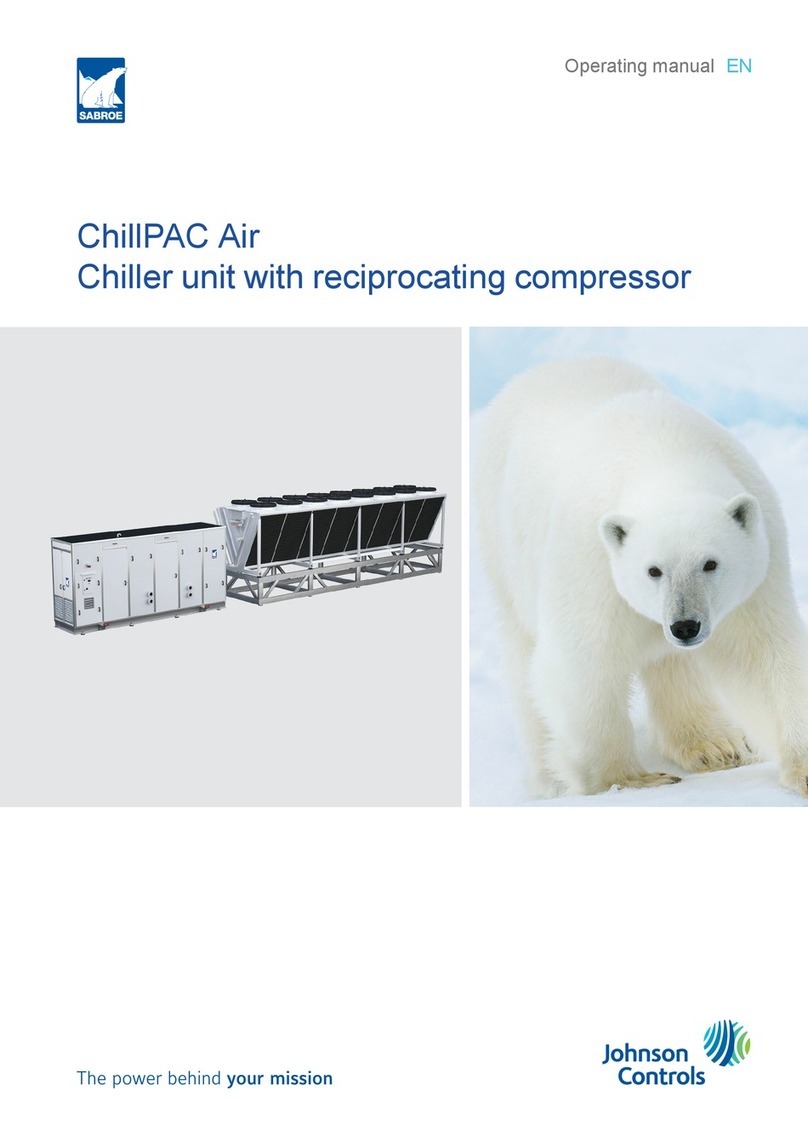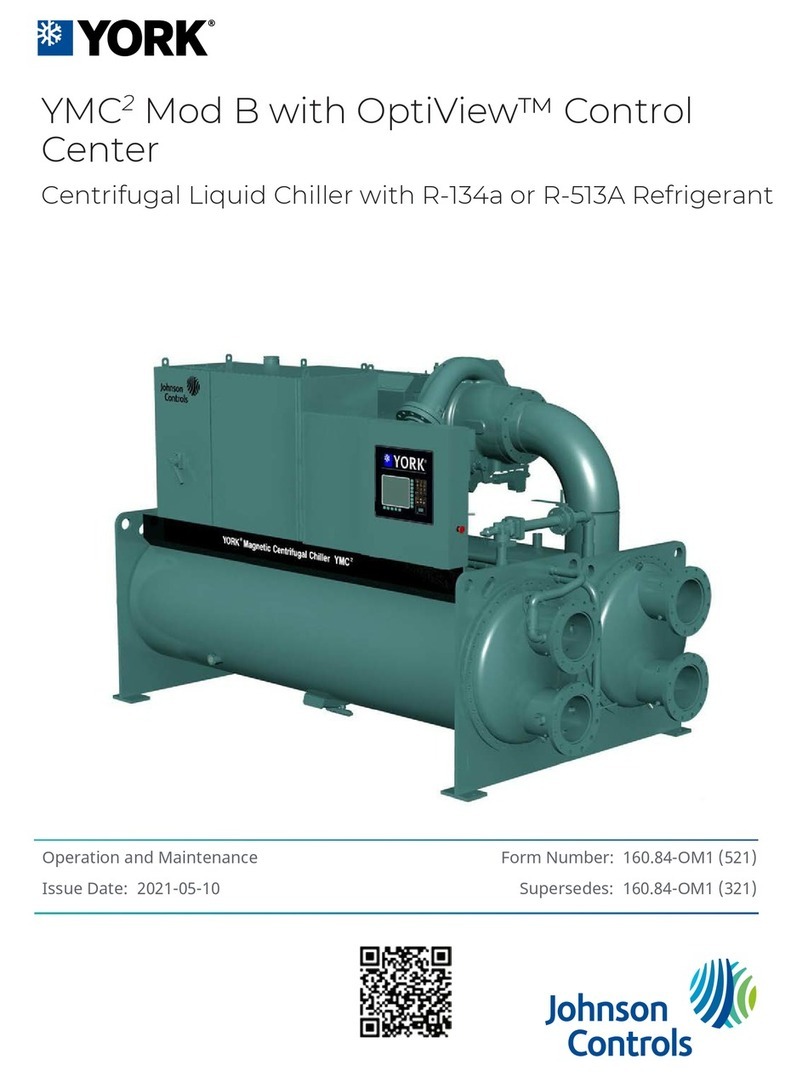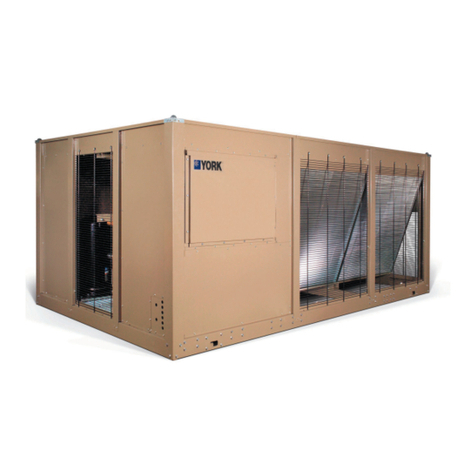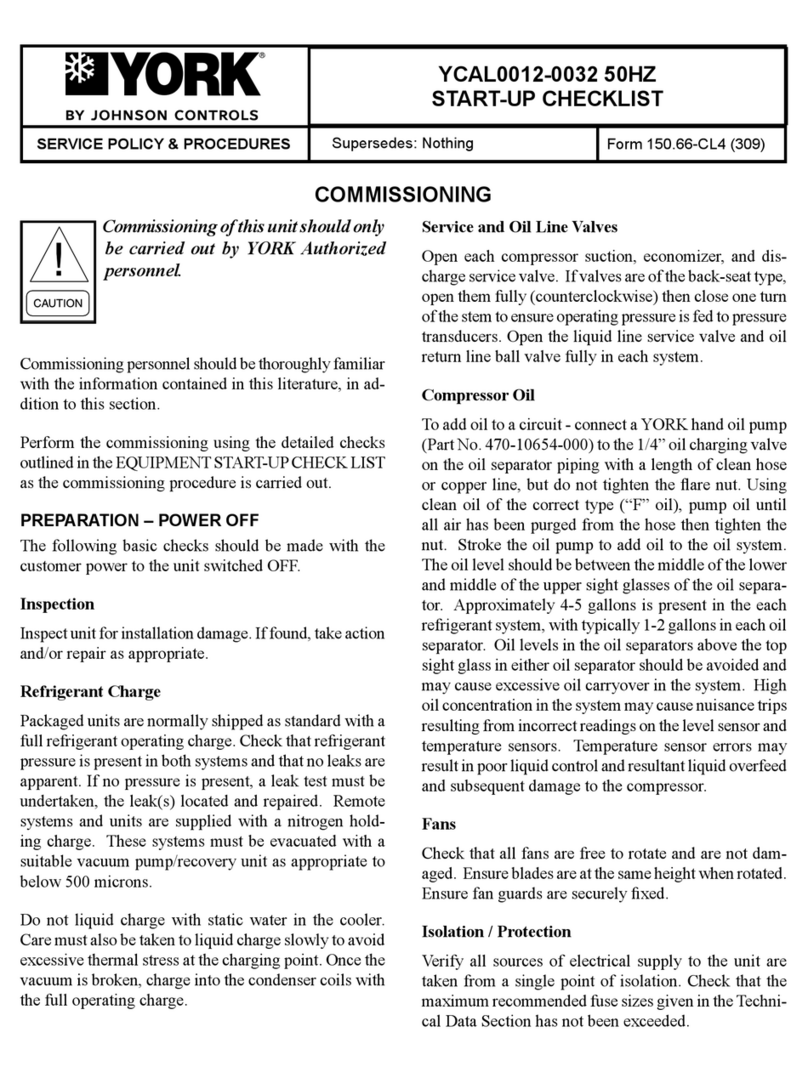
FORM 160.54-O1
5
JOHNSON CONTROLS
LIST OF FIGURES
FIG. 1 – MODEL YK MAXE™ CHILLER ............................. 6
DETAIL A – COMPRESSOR PREROTATION
VANES.................................................................. 7
FIG. 2 – REFRIGERANT FLOW-THROUGH CHILLER..... 8
FIG. 3 – OPTIVIEW CONTROL CENTER.........................11
FIG. 4 – HOME SCREEN................................................. 16
FIG. 5 – SYSTEM SCREEN............................................. 19
FIG. 6 – EVAPORATOR SCREEN ................................... 21
FIG. 7 – CONDENSER SCREEN..................................... 24
FIG. 7A – HEAT RECOVERY SCREEN ............................. 26
FIG. 7B – HEAD PRESSURE SCREEN............................. 30
FIG. 8 – REFRIGERANT LEVEL CONTROL SCREEN
(Flash Memory Card version C.MLM.01.06.XXX
and earlier) ......................................................... 32
FIG. 8A – REFRIGERANT LEVEL CONTROL SCREEN
(Software Version C.MLM.01.07.xxx to
C.MLM.01.10D.xxx or C.OPT.01.10D and earlier) .. 34
FIG 8B – REFRIGERANT LEVEL CONTROL SETPOINTS
SCREEN (Software Version C.MLM.01.07.xxx to
C.MLM.01.10D.xxx or C.OPT.01.10D
(and earlier)) ....................................................... 36
FIG 8C – REFRIGERANT LEVEL CONTROL SCREEN
(Software version C.MLM.01.14.xxx (and later) or
C.OPT.01.14.306 (and later)) ............................. 38
FIG. 9 – COMPRESSOR SCREEN
(All “P” Compressors and Style F chillers with
G, Q or H5-8 compressors) ................................ 40
FIG. 9A – COMPRESSOR SCREEN (Style E and earlier
chillers with G, H or J compressors and Style F
and later chillers with J or H3 compressors)....... 42
FIG. 10 – PROXIMITY PROBE CALIBRATION SCREEN
(Style E and earlier chillers with G, H and J
compressors and Style F and later chillers with
J or H3 compressors) ......................................... 44
FIG. 11 – HOT GAS BYPASS SCREEN ............................ 46
FIG. 12 – SURGE PROTECTION SCREEN ...................... 48
FIG. 12A – VARIABLE GEOMETRY DIFFUSER SCREEN.. 52
FIG. 12B – VARIABLE GEOMETRY DIFFUSER SETPOINTS
SCREEN............................................................. 54
FIG. 13 – PRE-ROTATION VANES CALIBRATION
SCREEN............................................................. 56
FIG. 14 – VSD TUNING SCREEN ..................................... 58
FIG. 15 – OIL SUMP SCREEN........................................... 60
FIG. 16 – ELECTRO-MECHANICAL STARTER SCREEN.... 64
FIG. 17 – MOD “A” SOLID STATE STARTER SCREEN .... 66
FIG. 18 – MOD “B” SOLID STATE STARTER SCREEN .... 68
FIG. 18A – MEDIUM VOLTAGE SOLID STATE STARTER
SCREEN............................................................. 70
FIG. 19 – VARIABLE SPEED DRIVE SCREEN ................. 72
FIG. 19A – MEDIUM VOLTAGE VARIABLE SPEED DRIVE
SCREEN (Software Version C.OPT.01.16.xxx
and Later) ........................................................... 74
FIG. 20 – VARIABLE SPEED DRIVE DETAILS SCREEN
(Style D VSD and VSD with part number
371-03789-xxx (503 HP 60 Hz; 419 HP 50 Hz).. 78
FIG. 21 – VARIABLE SPEED DRIVE DETAILS SCREEN
(VSD with Part Number 371-02767-XXX
(60 Hz) or 371-03700-XXX (50 HZ))................... 80
FIG. 22 – ADAPTIVE CAPACITY CONTROL SCREEN
(software version C.OPT.01.18.307 and earlier) 82
FIG. 22A – ADAPTIVE CAPACITY CONTROL SCREEN
(YORK protocol conguration)
(software version C.OPT.01.19.307 and later) ... 84
FIG. 22B – ADAPTIVE CAPACITY CONTROL SCREEN
(Modbus protocol conguration)
(software version C.OPT.01.19.307 and later) ... 86
FIG. 22C – SURGE MAP SCREEN - TABLE VIEW
(software version C.OPT.01.19.307 and later) ... 90
FIG. 22D – SURGE MAP SCREEN - LIST VIEW
(software version C.OPT.01.19.307 and Later) .. 92
FIG. 23 – HARMONIC FILTER DETAILS SCREEN
(Style D VSD and VSD with part number
371-03789-xxx (503 HP 60 Hz; 419 HP 50 Hz).. 94
FIG. 24 – HARMONIC FILTER DETAILS SCREEN
(VSD with Part Number 371-02767-XXX (60 Hz)
or 371-03700-XXX (50 Hz)) ............................... 96
FIG. 25 – MOTOR LUBRICATION SCREEN (Software version
C.MLM.01.14.xxx (and later) or C.OPT.01.14.306
(and later)) .......................................................... 98
FIG. 26 – SETPOINTS SCREEN ..................................... 100
FIG. 27 – SETUP SCREEN.............................................. 104
FIG. 27A – QUICK START SCREEN.................................. 108
FIG. 28 – SCHEDULE SCREEN .......................................112
FIG. 29 – USER SCREEN.................................................114
FIG. 30 – COMMS SCREEN.............................................116
FIG. 31 – PRINTER SCREEN...........................................118
FIG. 32 – SALES ORDER SCREEN ................................ 120
FIG. 33 – OPERATIONS SCREEN .................................. 122
FIG. 34 – HISTORY SCREEN.......................................... 124
FIG. 35 – HISTORY DETAILS SCREEN .......................... 126
FIG. 36 – SECURITY LOG SCREEN............................... 127
FIG. 37 – SECURITY LOG DETAILS SCREEN ............... 128
FIG. 38 – CUSTOM VIEW SCREEN................................ 129
FIG. 39 – CUSTOM VIEW SETUP SCREEN
................... 130
FIG. 40 – TREND SCREEN ............................................. 132
FIG. 41 – TREND SETUP SCREEN ................................ 134
FIG. 42 – ADVANCED TREND SETUP SCREEN............ 136
FIG. 43 – COMMON SLOTS SCREEN ............................ 138
FIG. 44 – PRINTERS ....................................................... 164
FIG. 45 – SAMPLE PRINTOUT (STATUS)....................... 170
FIG. 46 – SAMPLE PRINTOUT (SETPOINTS)................ 172
FIG. 47 – SAMPLE PRINTOUT (SCHEDULE)................. 174
FIG. 48 – SAMPLE PRINTOUT (SALES ORDER)........... 175
FIG. 49 – SAMPLE PRINTOUT (HISTORY) .................... 176
FIG. 50 – SAMPLE PRINTOUT (SECURITY LOG).......... 178
FIG. 51 – SAMPLE PRINTOUT (TREND)........................ 178
FIG. 52 – SAMPLE PRINTOUT – (CUSTOM SCREEN).. 179
FIG. 53 – SAMPLE PRINTOUT – (ADAPTIVE CAPACITY
CONTROL NEW MAP POINT)......................... 179
FIG. 54 – SAMPLE PRINTOUT (ADAPTIVE CAPACITY
CONTROL EXISTING MAP POINTS) .............. 179


